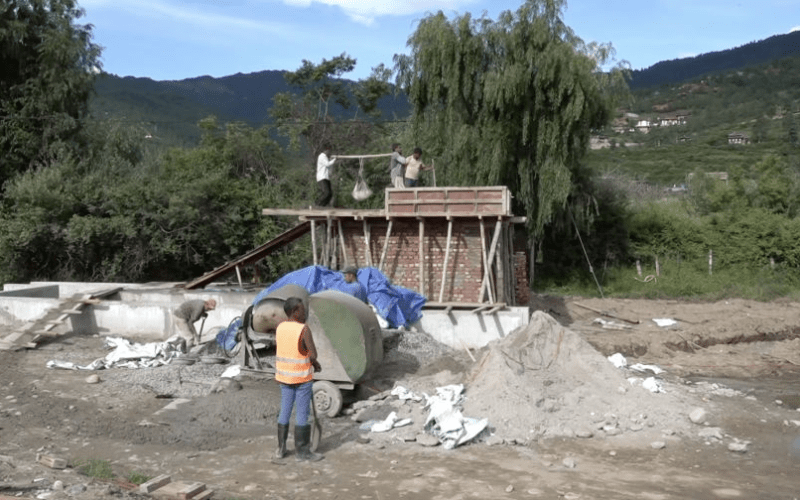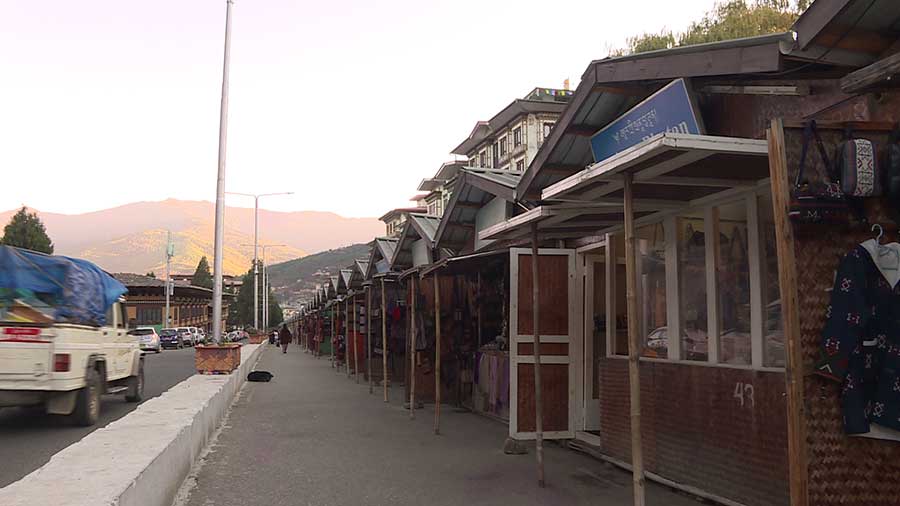After years of battling water shortages and dwindling agricultural prospects, farmers in Changsima village, Hungrel Gewog, are turning to the sun for salvation.
Inspired by the success of a similar initiative in nearby Shaba Gewog, Changsima has embarked on constructing its own solar lift irrigation system. The new infrastructure, funded by the Bhutan Trust Fund for Environmental Conservation at a cost of Nu 8.1 million, is expected to be operational by the end of this year. Once completed, the system will bring much-needed water to 30 households in the area—just in time for next year’s paddy season.
Though the village’s rice fields may look healthy today, residents say appearances are deceiving. “Irrigation has been one of our biggest challenges,” said Changsima Tshogpa Tashi Tshering. “The water source is seven kilometers away in Dopshari Gewog, and by the time it reaches our fields, there’s hardly anything left.”
For decades, farmers relied on a distant stream that delivered a trickle of water after a long, uphill journey. Attempts to supplement the supply with electric pumps proved too costly for most families. As a result, crop yields stagnated and interest in farming began to wane.
“Irrigation has always been difficult in Hungrel,” echoed Officiating District Agriculture Officer Tandin Tshewang. “People have had to walk long distances just to access water. With such limited supply, productivity has suffered.”
The tide began to turn in 2022 when Gangri village in Shaba Gewog became one of the first in the region to adopt solar irrigation, with support from the International Centre for Integrated Mountain Development (ICIMOD). The system not only addressed water scarcity but also reinvigorated the community’s relationship with agriculture.
“The change has been remarkable,” said Passang Dorji, a resident of Gangri. “In winter, when irrigation needs are low, the system generates surplus electricity that’s sold back to Bhutan Power Corporation. During summer, we use it daily, rotating access among households.”
The Changsima project hopes to replicate that success. Construction began in July, and locals are optimistic. “Things have improved, but the water issue hasn’t been solved completely,” said resident Tandin Wangchuk. “This new system could finally change that and bring more young people back to farming.”
With climate change placing added pressure on traditional water sources, solar lift irrigation is gaining attention nationwide. A recent study by the International Development Research Centre and ICIMOD highlighted the technology as a sustainable and essential response to Bhutan’s growing agricultural challenges.
Government officials have already signaled plans to expand solar-powered irrigation across other districts, citing its environmental benefits and cost-efficiency over diesel and electric alternatives.
For Changsima’s farmers, the promise of a reliable water supply means more than just greener fields—it signals a path back to thriving rural livelihoods.








